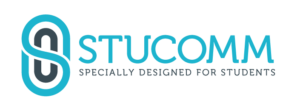
The Key to an Effective Contact Strategy – part 1

In this blog series, we will explore how educational institutions can create an effective contact strategy. This blog is about the first component of a contact strategy: the information.
Transferring knowledge to students is the primary activity of an educational institution. Educational institutions possess a multitude of learning resources for students including lectures, books and online material for their students. Even with all of these resources at their disposal, some students struggle and even fail to graduate.
This is not because educational institutions lack a range of learning resources, but because it can sometimes be difficult for students to find the right information they need at the right time. Knowing where your lecture room is, how to contact the corresponding lecturer and where to find the reading material are fundamental to the student experience. When that need is not being met, many students drop out.
It is for that reason that we urge any and all educational institutions to create a contact strategy. Such a strategy helps to map all the information students need and want. With that knowledge, the right information can be shared with students at the right time. What is it that students want? And what is it that students need? It is important to understand that there are three types of information students need or want.
Types of Information
Primary information is the most basic type of information. This is the minimum amount of information students need to be successful. When this is not being delivered by your educational institution, drop outs are most likely to be very high. Timetables, assessment deadlines and study results are core to the student experience. Students need to know where to be, they need to know what grades they received and they need to know their progress. If their grades are failing, they need to know so they can adjust the way they are going about their studies.

After primary information, comes more detailed information. For some students this information is a need, for others it is a want. Providing this information allows your students to focus on graduating rather than jumping through hoops to get the information. This could include knowing where to be at a certain time and being able to register for exams. Also sharing relevant news and events can be important to students. Most important in this category is the ability for students to reach out when they need help. When students are struggling with grades or even mental health, they need to be able to reach out.
The last type of information is not what students need, but what they want. Students are perfectly capable of succeeding without this type of information, but are likely to be more successful when this information is provided. This could include internships opportunities, connections with businesses and everything they need for life after they graduate.
The Start of an Effective Contact Strategy
Knowing what information your students need, is the first step in creating an effective contact strategy. By mapping that information with your colleagues and validating it amongst students, you will know what you need to communicate with your students. In our next blog, we’ll discuss the second part of your contact strategy: what is the best way to transfer your information?







